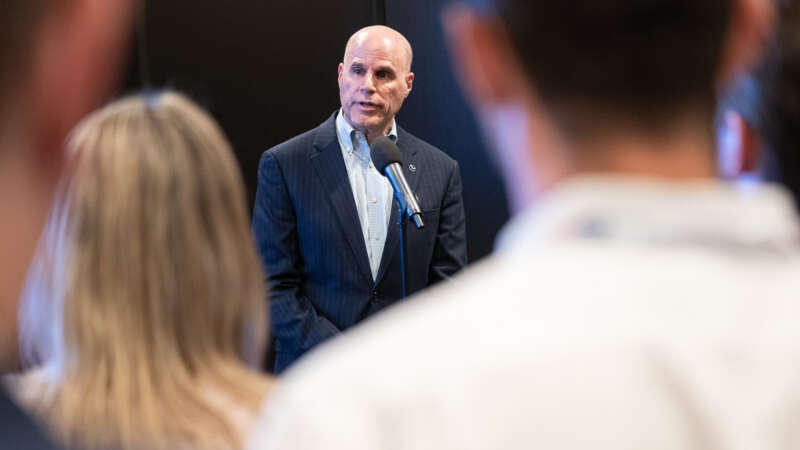
Transportation Department (DoT) CIO Cordell Schachter emphasized top findings of the “Digital Dozen” Federal chief information officers whose thinking underpins MeriTalk’s “Tech Tonic: FY25 Federal CIO Forecast” report in remarks at Tech Tonic on Sept. 19, and how important it is for the Federal government to modernize IT systems to address many of those priorities.
The new report surveys 12 major Federal agency CIOs on their top tech priorities for fiscal year 2025 and finds that cybersecurity is the top priority among CIOs, followed by workforce transformation, and AI technologies.
Schachter – who became DoT’s CIO in 2021 after 13 years as chief technology officer and CIO at the New York City Department of Transportation – talked about his interest in Federal policy while he was still working for the city of New York.
“Beginning with the publication of the IT dashboard, I began to take notice of what was going on in the Federal government, and I thought that was a terrific idea” to present all of the Federal government’s IT investments, he said.
“Then in the spring of 2021, the Biden administration issued its executive order on improving the nation’s cybersecurity,” he recounted. “It was like the bell going off again, because here were priorities that every CIO, every CISO … everyone in any kind of departmental or agency leadership should be ready to embrace,” he said, adding, “there they were, the top priorities to align your budgets and efforts around.”
The FY25 Federal CIO Forecast report finds that the biggest roadblocks Federal CIOs have encountered are funding and skill gaps – both of which have hindered IT system modernization, which Schachter said is a top priority for DoT.
“Our third priority [in the new report] is IT system modernization because we think we can’t do cybersecurity unless our systems are modernized,” said Schachter.
“We’re asking for more funding and support to do that the same way that we have a cybersecurity appropriation – to be able to have basically technicolor dollars that we can apply” to any of DoT’s transportation areas to improve cybersecurity practices, “we want to do the same thing for IT system modernization.”
Other top priorities that CIOs shared in the report include zero trust architectures, digital government and citizen experience, cloud computing, application and infrastructure modernization, and internet of things.
“We’re still looking to improve on all of those things with like, easy catch phrases, like ‘even a little MFA [multifactor authentication] in the beginning is better than no MFA,’ and then we’ve driven our network MFA score to nearly 99 percent,” said Schachter.
“And that’s only with agreement of our departmental leadership, because we’re responsible for nine operating administrations in all different forms of transportation, and they all have their priorities – and they’re not necessarily IT priorities unless we make them priorities,” he said.
“I’m sure my fellow CIOs will agree, the authorities in FITARA [Federal Information Technology Acquisition Reform Act] and FISMA [Federal Information Security Management Act] are what we need to be able to supervise the activities and oversee them and exercise those authorities – as well as being accountable for them – and leading up to the secretary or deputy secretary of particular department, make them accountable as well,” he continued.
Agency CIOs contributing to the “Tech Tonic: FY25 Federal CIO Forecast” include those from departments of Labor; Treasury; Justice; Transportation; Defense; and Agriculture; National Science Foundation; Office of Personnel Management; Social Security Administration; Nuclear Regulatory Commission; U.S. Agency for International Development; and the Small Business Administration.
